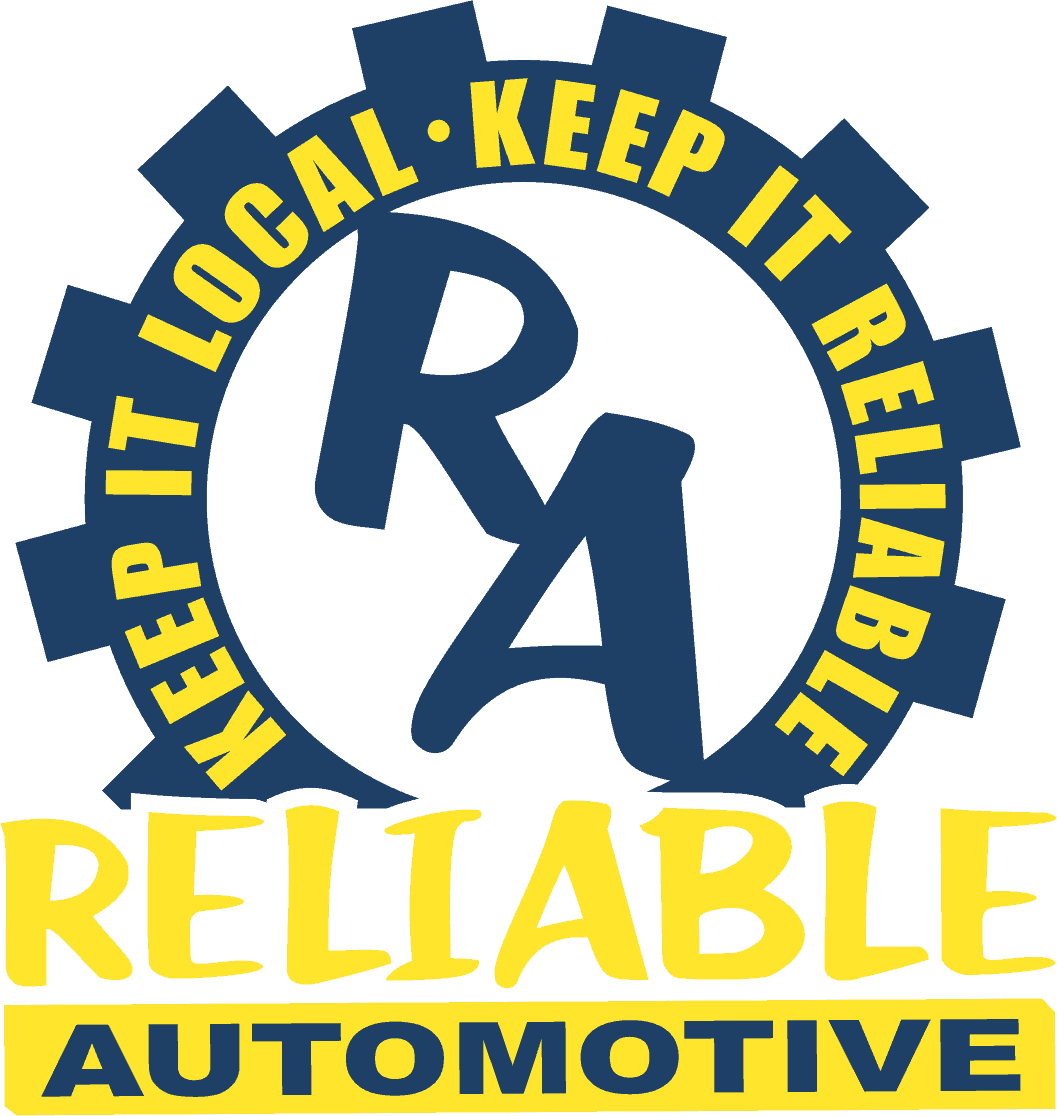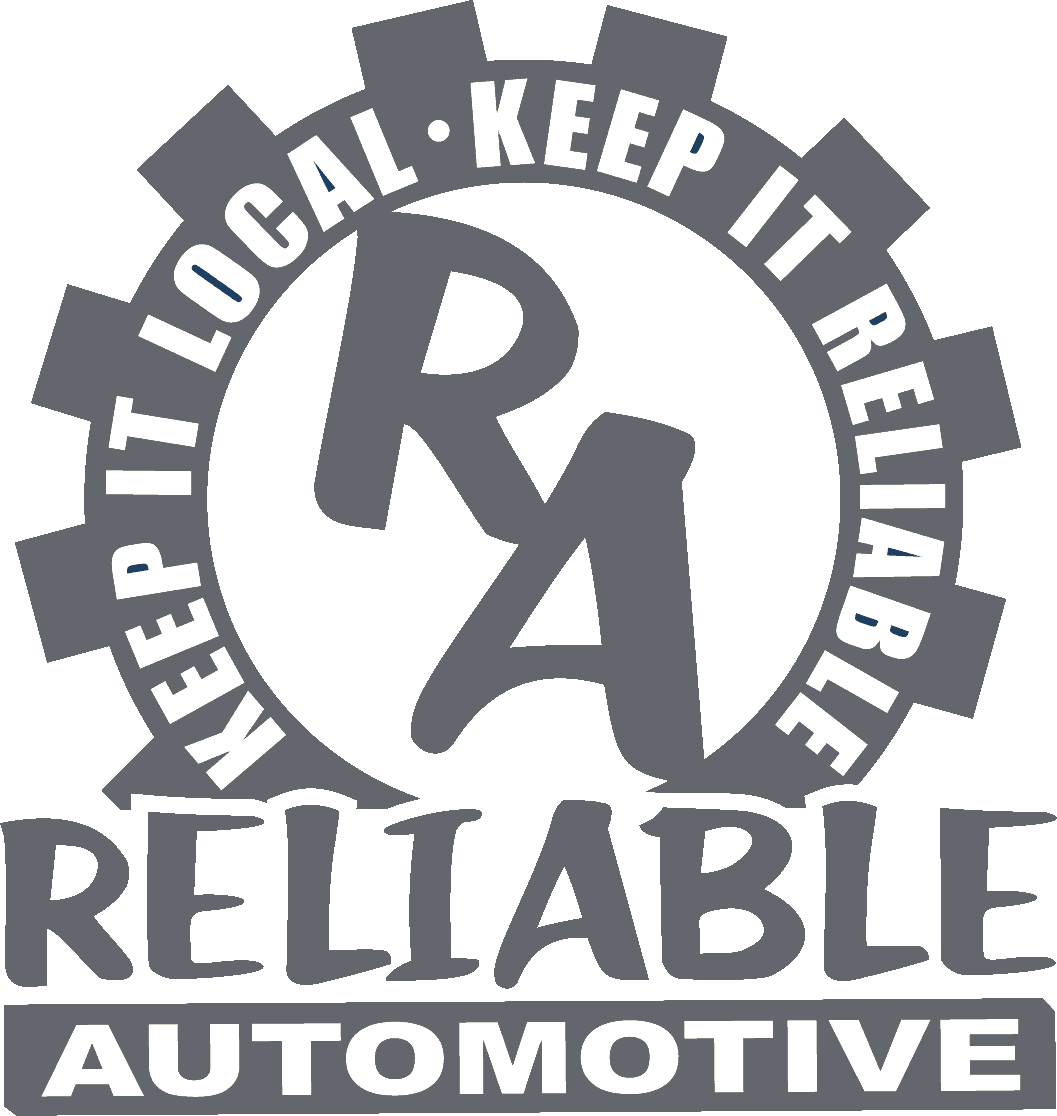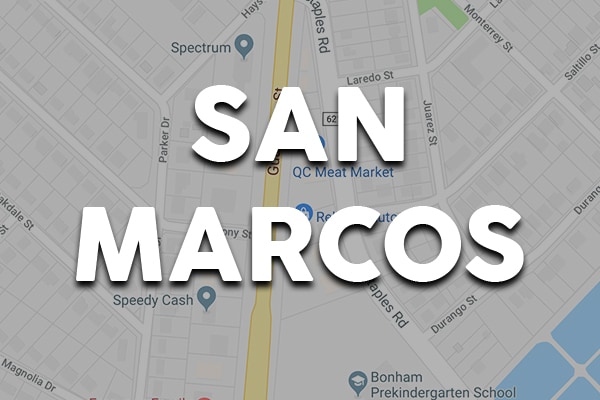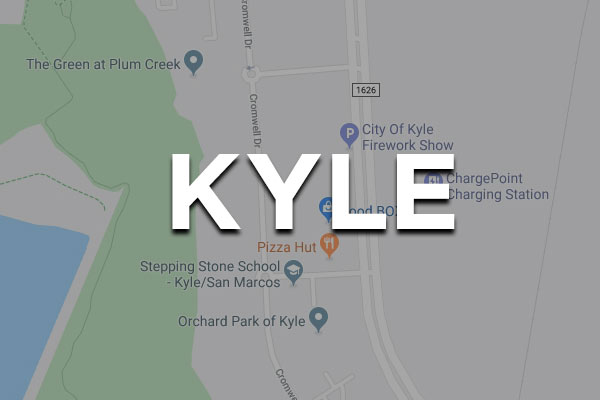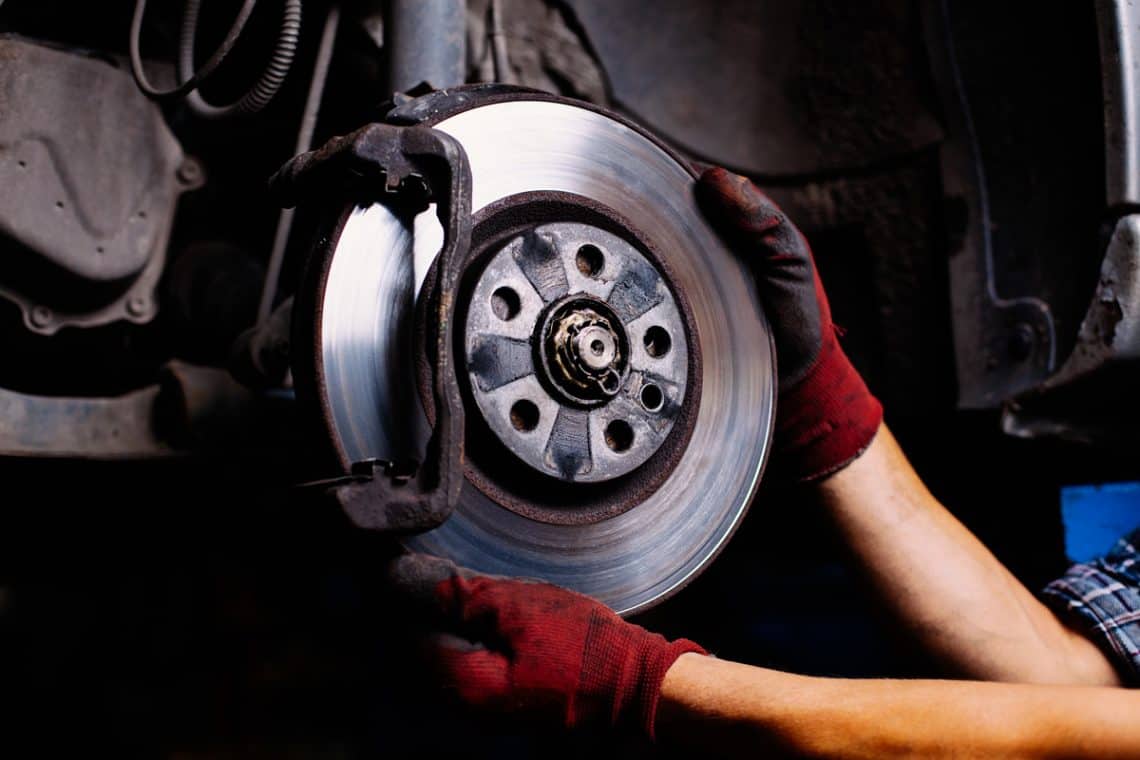
The brake system on your vehicle is not only one of the most critical contributors to your safety, but also to the safety of those in the car with you and on the road around you. When you suspect there is a problem, do not wait to get a brake check at your local brake shop. Make an appointment right away as it may save time and money should there be more expensive repairs later if the vehicle is not looked over. It may also save a life. Safety always comes first!
Parts That Make Up the Brake System in Passenger Vehicles
The brake system in any car is made up of many parts working together. In order to get the most from the investment you made in your car, it is helpful to know what the components are. They are as follows:
- Anti-lock braking system (ABS) control module, which performs diagnostic checks on the braking system, sending correct pressure to each of the wheels.
- Brake booster, which reduces the pressure needed for braking and increases the force put on the master cylinder via the brake pedal.
- Disc brakes, which include brake pads that press on a disc (rotor) when the brake pedal is applied; these pads are attached to a caliper that frames the rotor that is usually on the front wheels.
- Drum brakes, which have wheel cylinders, shoes, and a drum that stop the car when the brake pedal is pressed; they are located at the rear of the vehicle.
- Emergency brake, which keeps the vehicle from rolling away when parked; it operates separately from the main brake system.
- Master cylinder, which converts pressure from non-hydraulic to hydraulic; this pressure is then used by the wheel cylinders to press the brake pads against the rotors to stop the car.
- Brake pedal, which is stepped on by the driver to stop the vehicle; a piston in the cylinder moves to complete the action.
- Wheel speed sensors, which monitor the speed of each tire and send the information to the ABS control module.
When you step on the brake pedal inside the car, a combination of pressure and friction on the pads press on the rotors to stop the car. However, if your brake pads are becoming worn or they are defective in some way, everyone in the car is in danger. There are about 300,000 crashes every year due to brake failure. Many of those failures could have been prevented with routine brake services that would have led to a brake pad replacement or repair.
A Brake Inspection Schedule
The standard recommendation is to have your brakes inspected every six months or after every 6,000 miles, whichever comes first. This gives your mechanic time to repair any small issues before they become major problems. This inspection can be added to your regular list of maintenance checks, such as oil changes or AC checks, saving you time and money. Another way of determining when it is time for a brake inspection is to gauge the width of the brake pads themselves. Pads start out with 12mm of the material that produces the friction that stops or slows your car. As a general rule, when you take your car or truck in for its diagnostic checks, the mechanic will suggest replacing the pads when they get down to three or 4mm. The one thing they do not want to see is the rotors being gouged out due to worn brake pads.
Nevertheless, not many drivers actually measure their brake pads. It is important to keep up your schedule of maintenance checks for your car and also to trust your brake specialists to measure this. These experts will keep your car on the road safely and can also provide you with advice on protecting your brake pads or replacing them when it is time to do so. Today’s brake specialists also have access to the latest technology in order to inspect and repair all components of the brake system, such as replacing pads and shoes, lubricating calipers, and machining the drums and rotors. It is therefore easy to see how important your choice of auto shop and mechanics is. You are building up a record of service over time that can be called upon when needed to verify previous work that has been completed. You are also developing a working relationship with the shop, its service staff, and the mechanics.
Now that you know the parts of a brake system, you can see how important a routine brake system inspection is that includes checks of the following:
- Brake pads
- Rotors or drums
- Brake calipers
- Brake cylinder
- Brake shoe
- Brake pedal
- Sensors
- ABS module
- Brake lines
After the inspection is completed, you will be given a report of the results as well as a written estimate of any additional work that is needed. The most common repairs that could be recommended are replacements of the brake pads and shoes, and the drums and rotors might also need to be machined to proper specifications. As a value-added service, all fluid levels in the car will be checked and refilled as needed, not just the brake fluid. Additionally, your auto shop’s service staff will take your vehicle for a test drive to make sure the repairs are complete. You will then be on your way, knowing your brakes are in good working order and that you are safe on the road.

Driving Habits and Your Brakes
Your personal driving habits also have an effect on your brakes. Here are some ways to keep your brake pads from wearing out before their time:
- Avoid speeding, which can lead to last-minute braking.
- Keep your foot off the brake as you drive.
- Try not to drive in stop-and-go traffic.
- Use major highways for your travel when it is possible.
Some of these actions are often unavoidable; brake pads are designed to wear out, yet how fast that happens depends on the driver and the vehicle. However, being aware of your brakes and how you may be causing them to wear prematurely can make a difference, as small as it may seem. Any wear and tear on your brakes that can be avoided keeps them functioning for as long as possible.
Brake Problems Between Inspections
Watch for these red flags that can alert you to problems with the brake pads in your vehicles:
Brake Fade
If you find that it now takes longer for the car to stop when you press the brake pedal, the pads may have worn down and might be too smooth to generate the friction that is necessary to work properly. The pads and rotor can then overheat. Pay attention!
Pulling to One Side or the Other
Each wheel on your car has small differences, which means the brake pads wear out at different rates because of where they are positioned on your vehicle. Pulling to one side or the other when you brake is the result. Make sure your auto shop and brake specialist check them out as soon as possible.
Squealing Noises
Each brake has a built-in wear indicator. This device is designed to alert you to problems with the brake pads before the rotors are damaged. It is important to pay attention when you hear a piercing noise that stops when you brake. The indicators are made of steel and the squealing happens when they make contact with the rotors without the brakes being applied; this is not a good sign! Your brake pads are worn out and need to be replaced before they damage the rotors, which can lead to a much more expensive repair. This is one of the most common brake problems and it can be averted by regular brake inspections.
Vibration in the Brake Pedal
Resin holds the brake pads together. Over time, it deteriorates, which results in a vibration when you brake. Another cause might be that the rotors need to be resurfaced. Nevertheless, there may be other causes that are unrelated to the brakes that result in vibrations, including problems with the steering components or the wheels needing to be balanced and aligned. Let your mechanic check it out and determine exactly what the problem is, so you can be back on the road safely and in comfort.
Rattling and Other Noises
There is a device in the brake system that holds the pads in place. If the device loosens for some reason, you will hear a clicking or rattling noise. Get it checked out!
Bouncing or Recurring Stoppage When Braking Suddenly
This is probably not a brake issue at all, and your safeguards may have already been conducted. Brake issues are not always going to cost you a lot of money, and few of them actually do. It may very well be a harmless squeak emanating from certain kinds of material in the brake pads, or the braking framework may have some residue or water in the system. The problem may not be causing damage but have it checked to make certain. The mechanic may simply need to add new brake fluid.
Burning Smell
It is a given that any time a car smells like it is burning somewhere, there is a serious problem! A strong, chemical burning smell after braking hard on steep road surfaces means the brakes or calipers are overheating. You need to pull over as soon as it is safe and let your brakes cool down. If you do not, you risk the chance of the brake fluid boiling and the brakes then failing completely. If there is smoke coming from a wheel, a caliper may be stuck and it is therefore unsafe to drive. This is obviously a problem that cannot be ignored. Get the car to an auto shop quickly.
Other Signs
Be observant of the following:
Puddles of Yellow Fluid on the Surface Under Your Car
If the fluid is leaking from the master cylinder or elsewhere in the brake framework, you will begin to experience a soft brake pedal, meaning there simply is not enough brake fluid to force the brake pads to clamp down hard on the rotors in the manner they are supposed to. The master cylinder has a tank that holds the brake fluid. When you brake, the fluid is forced out through piping that creates hydraulic weight. An inspection at your auto shop will allow the tank to be filled before too much damage is done. This is as long as you do not ignore the warning signs!
Brake Pads Less Than a Quarter Inch Thick
Not many drivers get down on the ground to measure their brake pads. Drive in and let your brake mechanic do that for you.
Overly Sensitive Brakes
If your brakes react too strongly as soon you press the brake pedal, there may be brake dust, grease, or fluid contaminating them. Additionally, the calipers might be misaligned, the mounting may be loose, or the caliper pistons could have seized. An auto mechanic can also check for collapsed or clogged brake lines and hoses, which cause a pressure build up. Brakes that respond in this way make for a dangerous and uncomfortable ride for everyone in the car.
Signs like these might seem like minor irritations but they can signal real trouble ahead if you ignore them. Do not take a chance with the safety of your family by not paying attention.
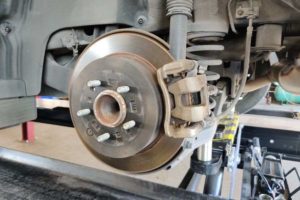
Brake Pad Replacement
Most mechanics recommend replacing the front and the back brake pads at the same time. In addition, it is not advisable to replace only one brake pad on either axle. There is also a difference in how the front brake pads wear compared to the ones at the back. In general, your vehicle handles more weight in the front of the vehicle; as you brake, this weight causes more wear on the front pads. Of course, the result of this is that the front pads will need to be replaced more often than those at the rear.
Brake Pad Materials Matter
Brake pads are either metallic, ceramic, or organic and each material has its own pros and cons. They all go through rigorous manufacturing and testing processes before they are ready to go on the market, but which ones should you have in your car? That decision will depend on how you use your vehicle as well as the cost versus value factor. Here are the basics:
Semi-Metallic Brake Pads
- Most common today
- Combination of metals and bonding materials
- Very durable
- Economical
- Perform well overall
- Good heat-dissipation properties
Semi-metallic pads get their structure from metal fibers. The metals used are typically high-quality steel, copper, iron, and other composite alloys, and they are combined with a graphite lubricant along with other fillers to make up the brake pad.
Ceramic Brake Pads
- Lightweight
- Durable
- Superb heat dissipation
- Composed of ceramic, sometimes cotton fibers, and bonding materials
- Made for high-performance vehicles
- More costly
- Less noise
- Last longer than semi-metallic brakes
Some of the most advanced microstructures on the planet are the ceramic fibers in brake pads. Specifically, the composition of ceramic brake pads makes them very stable under high temperatures.
Organic Brake Pads
- Composed of glass, rubber, or resin
- High heat tolerance
- Environmentally friendly
- Wear down faster than others
Organic brake pads are made for everyday driving (not for performance vehicles), and they do not create much heat when braking. The word organic refers to common materials like rubber, glass or fiberglass, and carbon secured with resin.
Cost of a Brake Job
This is the one question drivers ask the most. However, there is no simple answer as the cost can be affected by the make and model of your car, how often you use it, and how you want the vehicle to drive.
Here are some estimates you can refer to for general guidance, depending on how extensive the repair is going to be:
- You can expect to pay between $35 and $150 for parts for brake pad work on each of the four wheels. Labor per axle can vary between $80 to $120, which will total up to between $115 to $270.
- It is usually a good option to have your rotors replaced at the same time as your brake pads are, since worn rotors do not work very well, even with new pads. This may cost between $30 and $75 per rotor along with $150 and $200 for the labor for each axle. This comes to between $250 and $500 per axle.
- The most expensive part of the brake system to replace are the calipers. A single caliper can cost around $130. A complete brake repair that includes the pads, rotors and calipers can end up costing between $300 and $800 per axle.
Make an appointment today at your local Reliable Automotive shop! You can find us in Buda, San Marcos, and Kyle. Our goal is total customer satisfaction and high-quality service, and our professional, experienced service staff will prove it every time you bring your car in for service. Also, check out the coupons page on our website for brake specials on a regular basis as our coupons and specials change frequently. We are here to help you get the best value for your money!
Book a Brake Repair Appointment in Buda
Book a Brake Repair Appointment in San Marcos
Book a Brake Repair Appointment in Kyle
